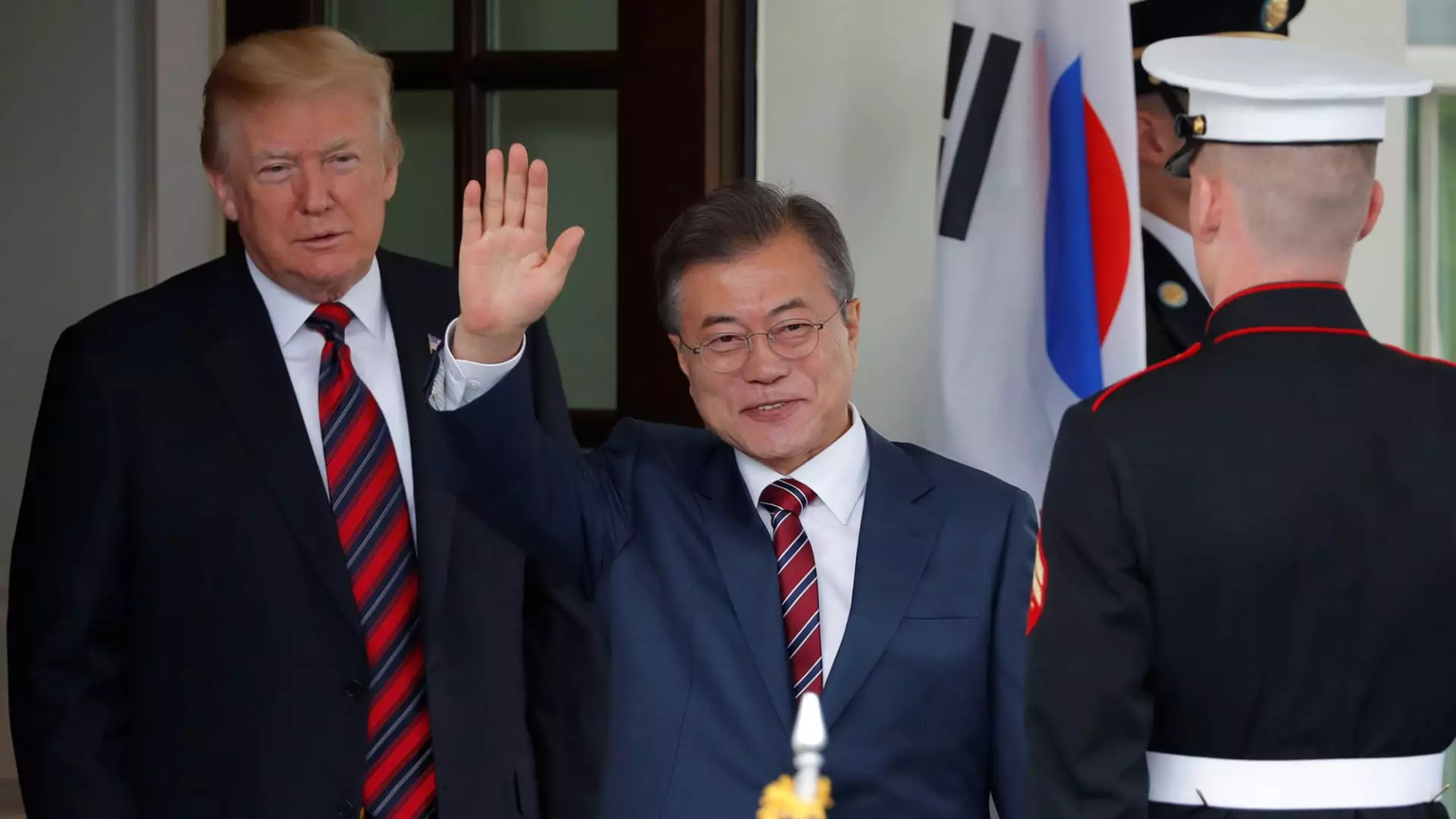The U.S. auto industry stands on the precipice of a significant transformation, largely driven by President Donald Trump’s threats to increase tariffs on foreign imports. The ongoing trade discourse not only impacts the domestic market but also sends ripples across international suppliers, particularly in East Asia. This article delves into the multifaceted implications of potential tariff hikes on vehicles imported from South Korea and Japan, two of the most prominent players in the automotive export market to the United States.
With Trump’s administration contemplating further tariffs, the auto industry may brace itself for a multifarious impact, particularly from South Korean and Japanese manufacturers. In 2024, these two nations accounted for a significant 16.8% of the total vehicles sold in the U.S., underscoring their critical role in the American automotive landscape. South Korea has emerged as a formidable competitor, exporting 8.6% of cars to the U.S., surpassing Japan’s 8.2%. Consequently, the proposed tariffs can impose an uphill challenge for automakers in these countries, especially since, unlike Mexico, imports from South Korea and Japan currently enjoy minimal tariffs.
The situation raises serious questions for major players like Hyundai and General Motors. Both companies rely heavily on tariff-free exports from South Korea, and any levies could distort their operational models. While General Motors has ramped up its imports from South Korea, Hyundai has established itself as a leading exporter in the U.S. market. The potential for increased tariffs may force these companies to rethink their strategies to mitigate the financial impact of higher consumer prices and fluctuating demand.
Historical tariff structures illustrate the precarious balance of international trade. Vehicles imported from Japan are subject to a 2.5% tariff, a relatively low figure compared to the proposed 25% for imports from Canada and Mexico. This discrepancy accentuates the potential competitive disadvantage for automakers in North America, particularly if tariffs are raised significantly. Japan’s automotive exports to the U.S. have seen a decline, while those from South Korea have surged, suggesting a shift in consumer preferences and market dynamics.
The worry among industry experts is that increased tariffs will inadvertently escalate vehicle prices for consumers. The U.S. auto industry thrives on competitive pricing, and any additional costs levied by tariffs could lead to reduced consumer demand—a situation that would ripple through supply chains, potentially affecting employment and economic stability within the sector.
U.S.-based automakers, most notably General Motors, have invested heavily in South Korea’s automotive industry, with GM alone reallocating approximately $6.2 billion since 2002. This investment highlights the complexity of the automotive supply chain which is influenced by not just local production, but also international partnerships. The looming threat of additional tariffs may disrupt these carefully curated relationships, forcing manufacturers to explore alternative strategies to maintain their market positions.
Gaining insight from industry experts, Terence Lau emphasizes that while the automotive sector possesses the adaptability to navigate adjusted tariffs, the immediacy of such changes poses a significant hurdle. A small increase in tariffs may be manageable, but thresholds above 10% risk eroding profit margins, thereby compelling companies to pass on costs to consumers or cut back on production.
The call for a more holistic approach to tariffs is gaining traction within the industry. Executives like Ford’s CEO Jim Farley champion a comprehensive tariff strategy that equally addresses competitive disparities across all nations. This sentiment reflects a growing frustration within the U.S. automotive sector, as companies face a multifaceted landscape characterized by selective policy enforcement that could unduly favor certain foreign competitors.
Companies like Toyota and Hyundai, which dominate imports from Japan and South Korea, respectively, are particularly under the spotlight as discussions of new tariffs progress. The White House’s silence on what potential tariffs might entail raises the stakes, leaving manufacturers and consumers alike in a state of uncertainty.
As discussions around tariffs continue to unfold, the U.S. auto industry’s future remains clouded with uncertainty. With key stakeholders in the automotive sector expressing concerns over pricing, competitiveness, and trade relationships, the potential ramifications of increased tariffs could set a precedent for how the industry adapts to global economic shifts. The administration will have to consider the sequential impact of its decisions not only on the economy but also on the livelihoods of those reliant on a thriving automotive market. Thus, a balanced, equitable trade policy becomes more crucial than ever in safeguarding the U.S. automotive industry’s competitive stature on the global stage.

Leave a Reply